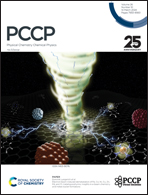Multifunctional dual-interface layer enables efficient and stable inverted perovskite solar cells†
Abstract
Considering that the hydrophobicity of PTAA as the surface of an inverted perovskite solar cell (PSC) substrate directly influences the crystallization and top surface properties of perovskite films, dual-interface engineering is a significant strategy to obtain excellent PSCs. PFN-Br was inserted into the PTAA/perovskite interface to ensure close interfacial contact and achieve exceptional crystallization, and then the perovskite top surface was covered with 3-PyAI to further improve its interface property. The mechanism of interaction of PFN-Br and 3-PyAI with perovskites was analyzed through various characterization methods. The results showed that the introduction of a hydrophilic interface layer reduces voids and defects at the bottom of the film. Additionally, the existence of 3-PyAI reduces surface defects, optimizes energy level alignment, and decreases non-radiative recombination, which is beneficial for charge transfer. Consequently, the open circuit voltage (VOC) and fill factor (FF) of the optimized device were greatly enhanced, and the champion device showed a power conversion efficiency (PCE) of 22.07%. The unencapsulated device with PFN-Br&3-PyAI can retain 80% of its initial performance after aging in the air atmosphere (25 °C at a relative humidity (RH) of 25%) for 27 days. Moreover, the reverse bias stability of the device was improved, with the reverse breakdown voltage (VRB) reaching −2 V. This work recommends a dual-interface strategy for efficient and reliable PTAA-based PSCs.



 Please wait while we load your content...
Please wait while we load your content...